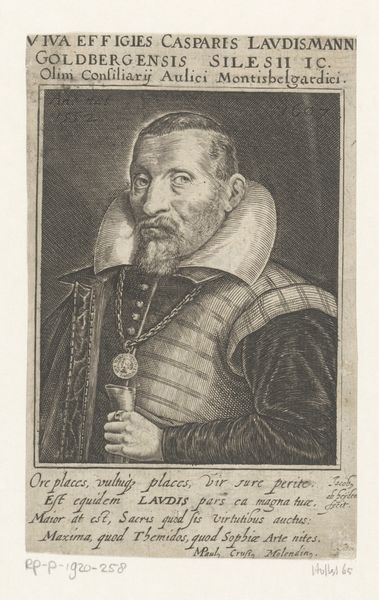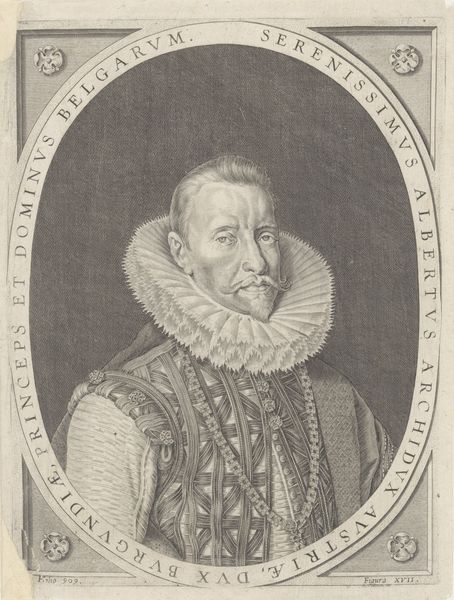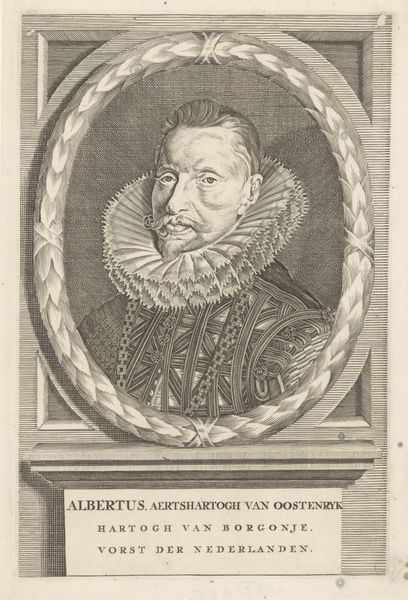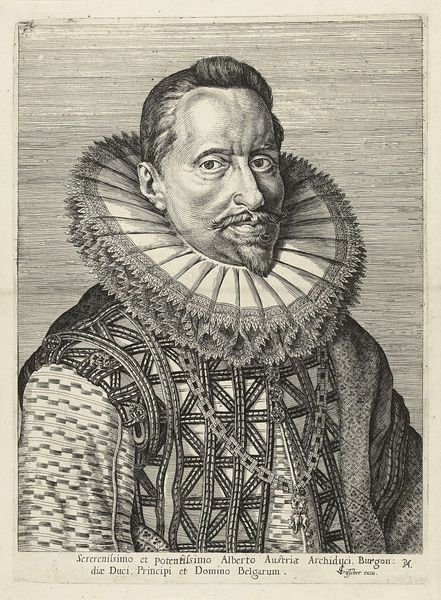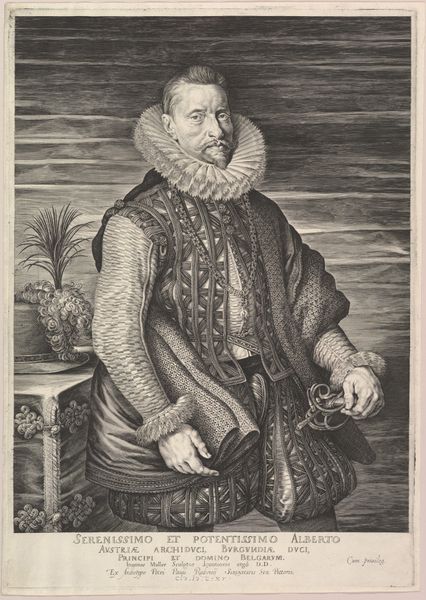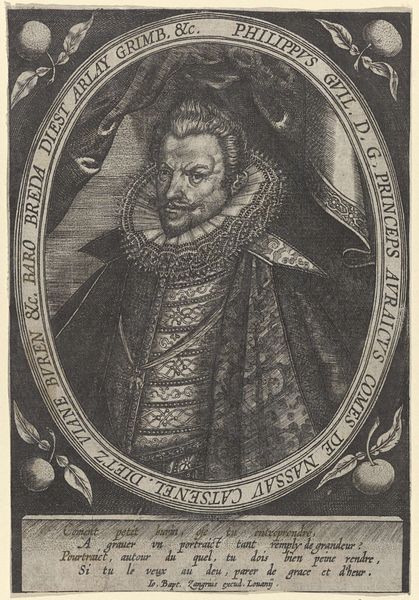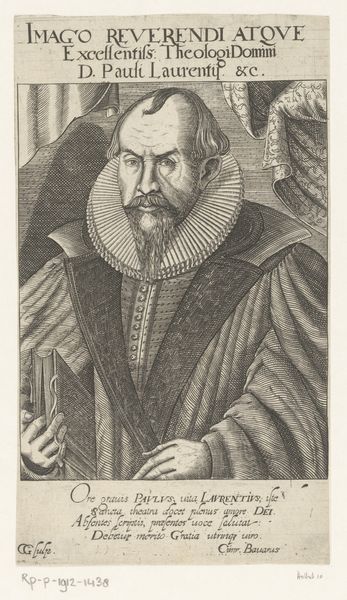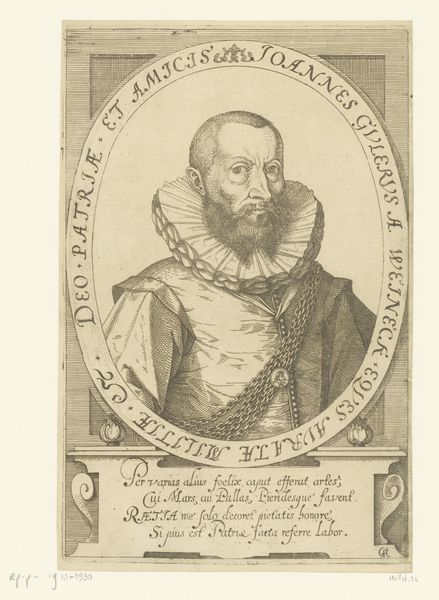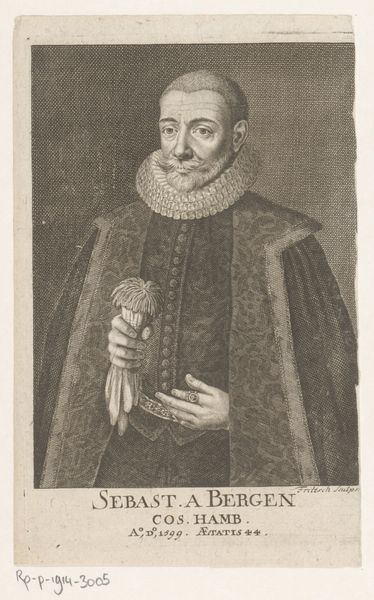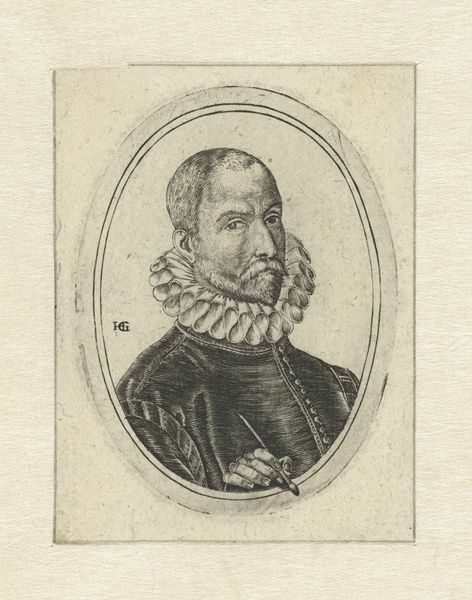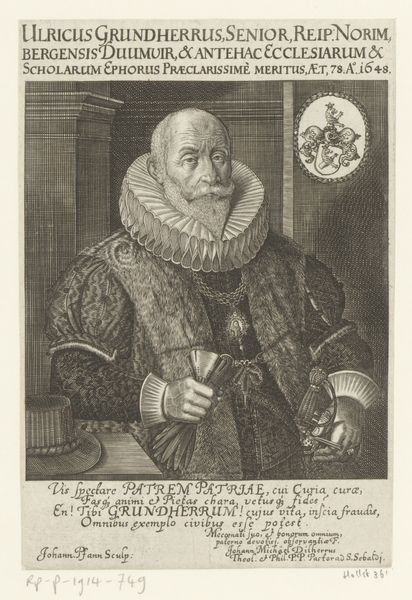
print, metal, engraving
#
portrait
#
baroque
# print
#
metal
#
old engraving style
#
caricature
#
history-painting
#
engraving
Dimensions: height 258 mm, width 187 mm
Copyright: Rijks Museum: Open Domain
Editor: So, this is "Portret van Albrecht, aartshertog van Oostenrijk," from the 17th century. It’s an engraving on metal and it resides here at the Rijksmuseum. It feels quite austere to me; very formal and of its time, you know? What catches your eye in this portrait? Curator: The weight of Habsburg power is almost palpable here, isn't it? Consider that ruff. It's not just fashion, it's a symbol, a barrier. Notice how it frames his face, drawing our attention, but also creating a visual distance, a separation of the Duke from us, the viewers. Editor: A barrier, yes, I can see that. It does feel less like an invitation and more like… a statement. What statement is he making? Curator: Think about what these images were meant to do. Beyond simple likeness, these portraits codified power. The chain, the fabric, even his carefully groomed moustache, these all declare his status, his lineage. It’s about conveying legitimacy. Editor: So everything is intentional, meant to project something specific. Curator: Precisely. And look at the engraving itself. The meticulous detail, the fine lines… This speaks to the level of skill and the value placed on representation. What message did that send to its contemporary viewer, the patron? The value they invested and received? Editor: I see. It’s a cultural memory frozen in metal, constantly broadcasting power. I never really thought about a ruff in that way. Thanks. Curator: Indeed. And we, as viewers centuries later, become participants in this ongoing symbolic conversation, interpreting it anew through our own lenses. We decide whether to receive its intended message.
Comments
No comments
Be the first to comment and join the conversation on the ultimate creative platform.
